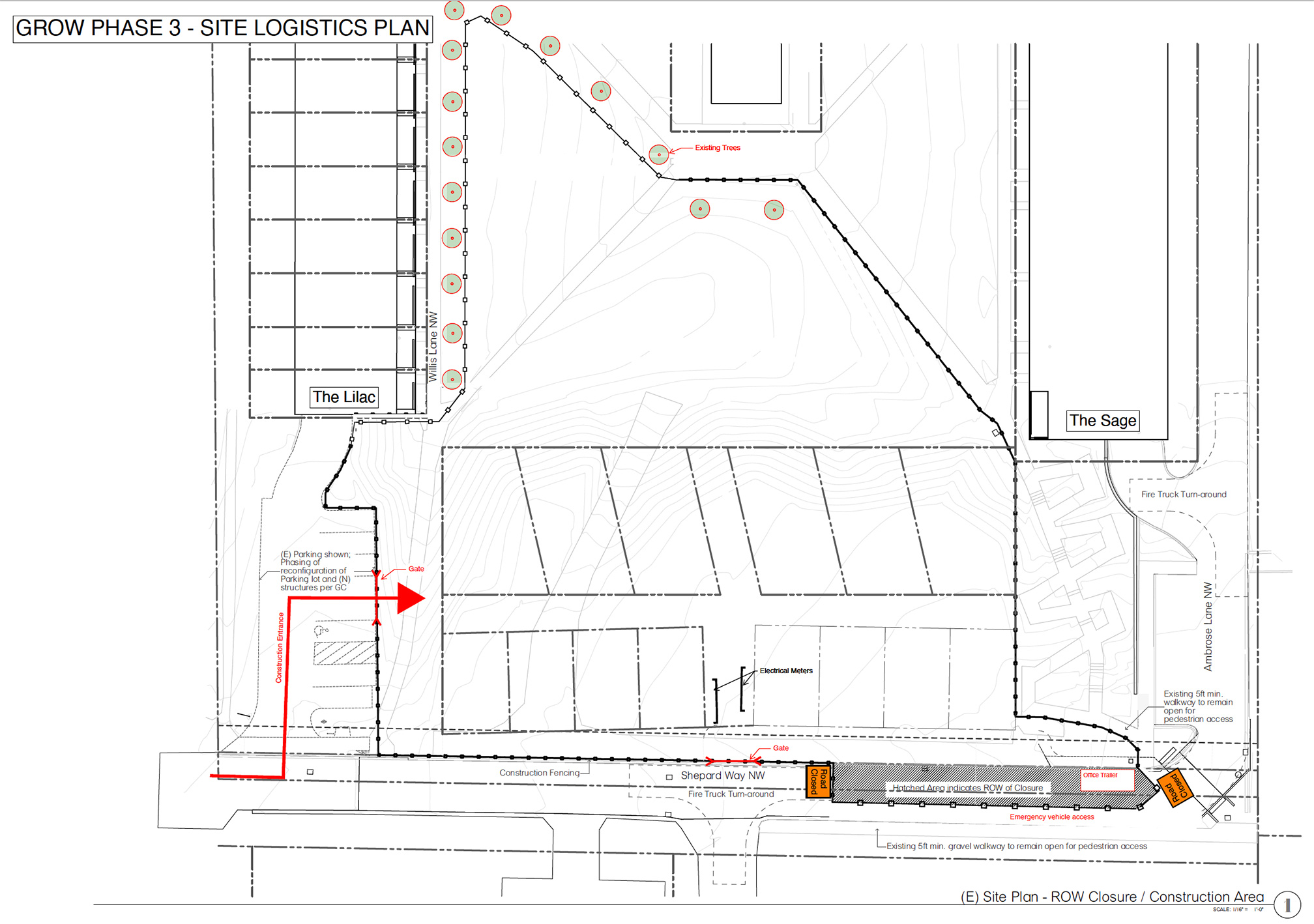July 2022 Update
As you likely already know Green Canopy NODE is developing the final phase of Grow Community. But you may not know when!
We plan to begin preparing the site in August. It is exciting for us to be part of this innovative project and to bring it to completion.
One of the first activities you will notice is the installation of a perimeter fence, and construction staging in the parking lot near Lilac. Please see the site map below for details, such as the continuation of the pedestrian passage along Shepard Way.
There are more details coming so please hold your questions for just a little bit. Soon we will follow up with timelines, what to expect, construction hours, etc.
Green Canopy NODE is a special purpose corporation focused on environmental sustainability in residential development. Our Grow community construction team includes these on-site members, and many behind the scenes:
- Ben Handziak, Construction Project Manager
- Evan Welch, Construction Site Supervisor
- Nina Milligan, Construction Communications Project Manager
- Sam Lai, Chief Development Officer
- Justin Hooks, VP Construction
- Greg Lotakis, Project Construction Support
And you may recognize these Bainbridge Islanders also engaged in the project:
- Joie Olsen, Sales and Marketing, Grow
- Anne Reichard, Sales and Marketing, Compass Real Estate
- Dana Fitzpatrick, Sales and Marketing, Compass Real Estate
- Deb Henderson, Marketing and Outreach, TRUE Creative
As we approach significant milestones and activities onsite, we will keep you posted. The best place to get the latest news will continue to be right here on this website. From here you can sign up for the email list at the bottom of the page, and link to various social media channels. “Follow” us to optimize your news feed.
Thank you for your support! More details coming soon!

